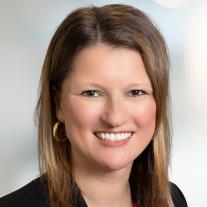
Confidential Research Lab Headquarters
We collaborated with clients, contractors and other disciplines to push the boundaries of sustainability and embodied-carbon reduction.
Engineering a six-story, 462,000-square-foot research facility to meet ambitious sustainability goals posed a welcome challenge for our team. Our sustainability experts, façade designers, structural and construction engineers, acoustics and vibration specialists, and protective design engineers worked together to provide the building’s owner and the tenant with an efficient, coordinated design for the composite-steel structure and its fit-out.
Since vibration control is paramount for laboratories housing ultrasensitive equipment, we performed vibration analyses for the whole building – and for the fit-out – and installed five tuned mass dampers.
To counteract the high energy demands that are typical of laboratories, the owner and tenant were committed to extreme sustainability. Features like high-performance triple-glazed façades, exhaust-air heat pumps, rooftop solar panels, stormwater capture and geothermal systems will offset energy consumption and help the facility earn LEED Platinum Core & Shell certification.
Leading on Embodied Carbon
Thornton Tomasetti recently updated our Division 1 Specification – Embodied Carbon Design Requirements – to address EC in steel and timber, in addition to concrete. This specification is one of the first of its kind in the AEC industry. We also provided data from 30 projects to the SE 2050 Commitment database, more than most contributing firms. See our SE 2050 Environmental Action Plan.
Throughout the design process, our team continually fine-tuned the structural system to reduce embodied carbon (EC) in the composite floor decks, steel framing and concrete foundations. During procurement, we used our EC specifications – completed in 2022 – to set bold reduction goals for the concrete used in the building and worked with local suppliers to meet these requirements, with no significant increase in cost.
A whole-building life-cycle analysis performed for the project showed a 17% reduction in CO2e relative to a baseline created in One Click LCA life-cycle assessment software. This significant reduction – in both the structural and whole-building EC, per LEED v4.1 guidelines – is one example of the innovative features contributing to the success of this project, which will be one of the most sustainable laboratory buildings in Greater Boston.










